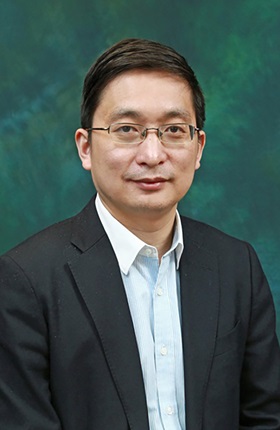
Prof. Yang CHAI
Professor, Department of Applied Physics
The Hong Kong Polytechnic University
Biography
Prof. Yang Chai is the Associate Dean of the Faculty of Science of the Hong Kong Polytechnic University, Vice President of the Physical Society of Hong Kong, a member of The Hong Kong Young Academy of Sciences, an IEEE Distinguished Lecturer since 2016, the Vice Chair of IEEE EDS region 10, and was the Chair of IEEE ED/SSC Hong Kong Chapter (2017-2019). He is a recipient of the RGC Early Career Award in 2014, the Semiconductor Science and Technology Early Career Research Award in 2017, the PolyU FAST Faculty Award in Research and Scholar Activities in 2018/2019, the Young Scientist Award of ICON-2DMAT in 2019, the PolyU President’s Award in Research and Scholar Activities in 2019/2020, NR45 Young Innovators Award in 2021, Young Scientist of World Laureate Forum in 2021, and a finalist for the Falling Walls Science Breakthroughs of the Year 2022 in Engineering and Technology. His current research interest mainly focuses on emerging electronic devices.
Retina-inspired vision sensors
Abstract
According to the projection by Semiconductor Research Corporation and Semiconductor Industry Association, the number of sensor nodes exponentially increases with the development of the Internet of Things. By 2032, the number of sensors is expected to be ~45 trillion, which will generate >1 million zettabytes (1027 bytes) of data per year. The massive data from sensor nodes obscure valuable information that we need it most. Abundant data movement between sensor and processing unit greatly increases power consumption and time latency, which poses grand challenges for the power-constraint and widely distributed sensor nodes in the Internet of Things. Therefore, it urgently requires a computation paradigm that can efficiently process information near or inside sensors, eliminate redundant data, reduce frequent data transfer, and enhance data security and privacy. We propose bioinspired in-sensor computing paradigm to reduce data transfer and decrease the high computing complexity by processing data locally. In this talk, we will discuss the hardware implementation of the in-sensor computing paradigms at the device and array levels. We will illustrate the physical mechanisms that lead to unique sensory response characteristics and their corresponding computing functions. In particular, bioinspired device characteristics enable the fusion of the sensor and computation functionalities, providing a way for intelligent information processing with low power consumption.


